Role of Python Libraries in Image Processing
October 30, 2025
Home >> Web Development >> Frontend vs Backend Development: A Comprehensive Guide for 2024
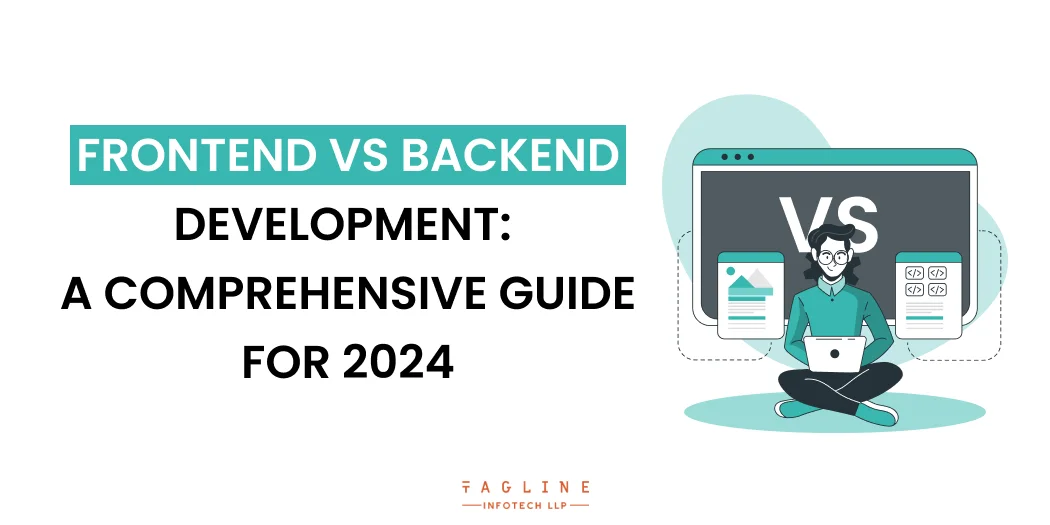
Quick Summary
Here you can see a comprehensive guide to understand the difference between front end and back end. Let’s dig into the dynamic and ever-evolving world of frontend vs backend development. In the domain of software and web development, the dissimilarity between Frontend and Backend plays a crucial role in creating seamless and interactive user experiences. As technology is continuing to get advanced it has become extremely important for developers to understand these two fundamental pillars while building websites and applications. In this blog, we will explore the comparison of frontend vs backend development to build cutting-edge solutions. Here you will understand what is frontend and backend? And decide which one is the best option for you.
Are you wondering what is front end development? Then don’t worry your trouble ends here. Frontend development can be simply described as the client side of web and software development that focuses on creating the user interface and user experience. It also requires a deep understanding of design principles to fill the gaps between logic and functionality.
Frontend developers mostly use programming languages like HTML, CSS, and JavaScript in the context of backend vs frontend development to design responsive websites and applications. They strive to ensure seamless navigation, optimal performance, and accessibility across various devices and browsers.
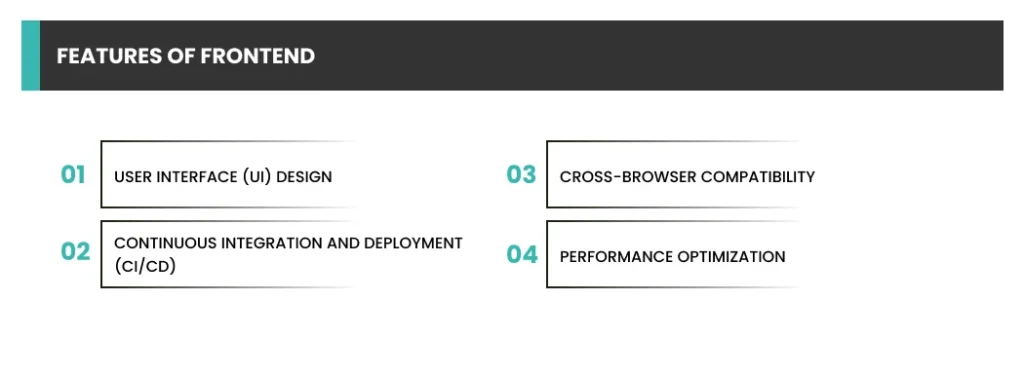
Here you can see some of the most useful features of Frontend development and create different types of solutions that offer user-friendly digital experiences.
Need a team of Front-end developers who can build modern and dynamic web applications?
Embrace the Power of Our Enthusiastic UI Experts! Hire a Frontend Developer Now and Accomplish Your Business Goals.
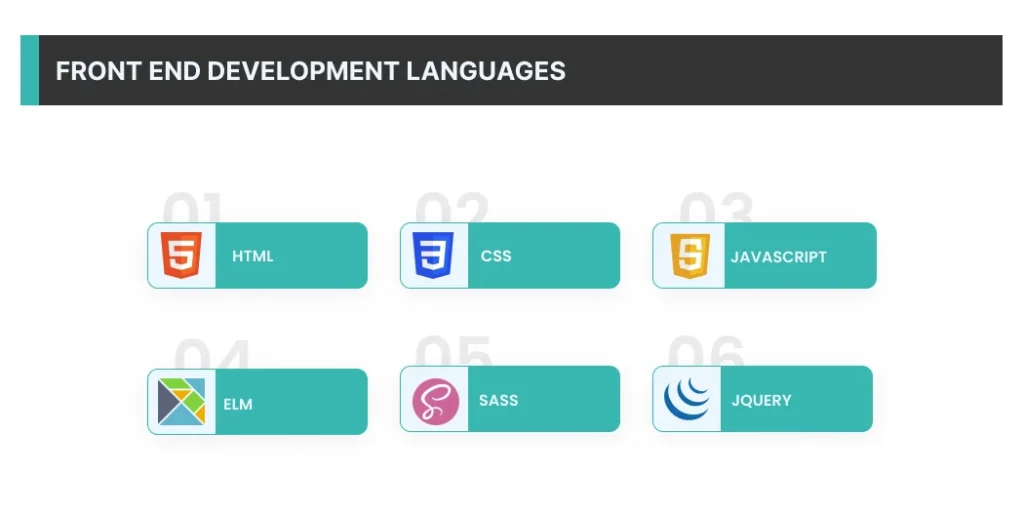
Here you can see some of the most popular Front End development languages that are being used to build attractive designs for websites and applications.
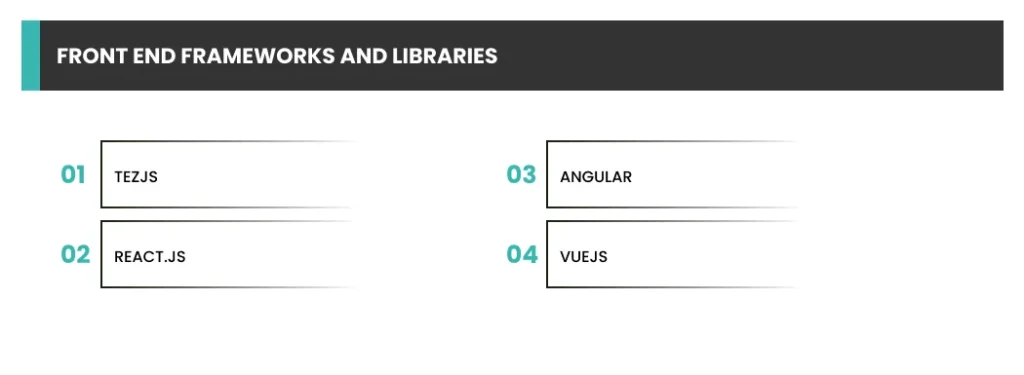
Explore the list of most popular front end frameworks and libraries that are being used to build various websites and web applications.
Tagline Infotech is a leading development company, and the cost of hiring frontend developers depends upon project requirements, complexity, and experience level. Understanding the difference between front end and back end development can help you make informed decisions. Our dedicated team is experienced in HTML, CSS, JavaScript, and modern frameworks. We offer competitive pricing models and flexible hiring options so that you can have cost-effective frontend solutions.
Also Read : Which One Is Better In 2024: GitHub Vs GitLab? What’s Different
If you are trying to figure out what is back end development then here you will get all the answers. The backend is considered the backbone of applications. You can simply describe backend development as a server-side aspect where data processing and storage are the main priority.
It also involves working with various databases, servers, and APIs that facilitate the complex operations necessary for integrating front end vs backend functionality. Understanding the distinction between front end vs back end can help you plan your upcoming project more effectively. Backend developers use languages like Python, Ruby, and Java to build robust and scalable systems.
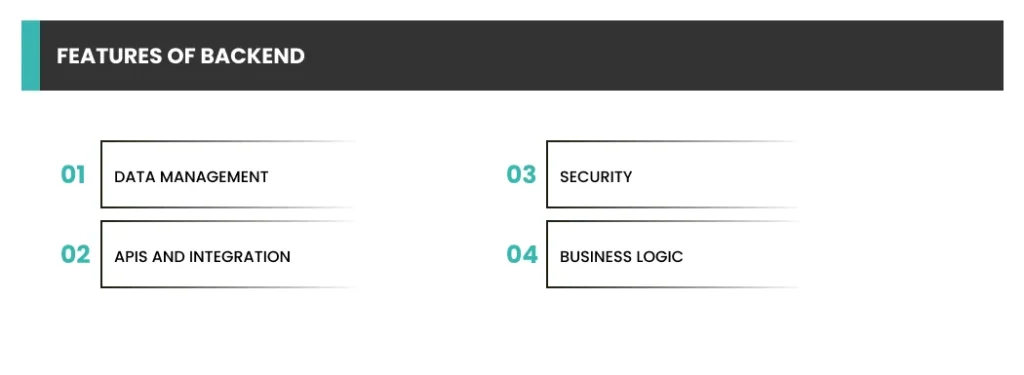
While doing a comparison of frontend vs backend you need to explore the main features of Backend that are given below.
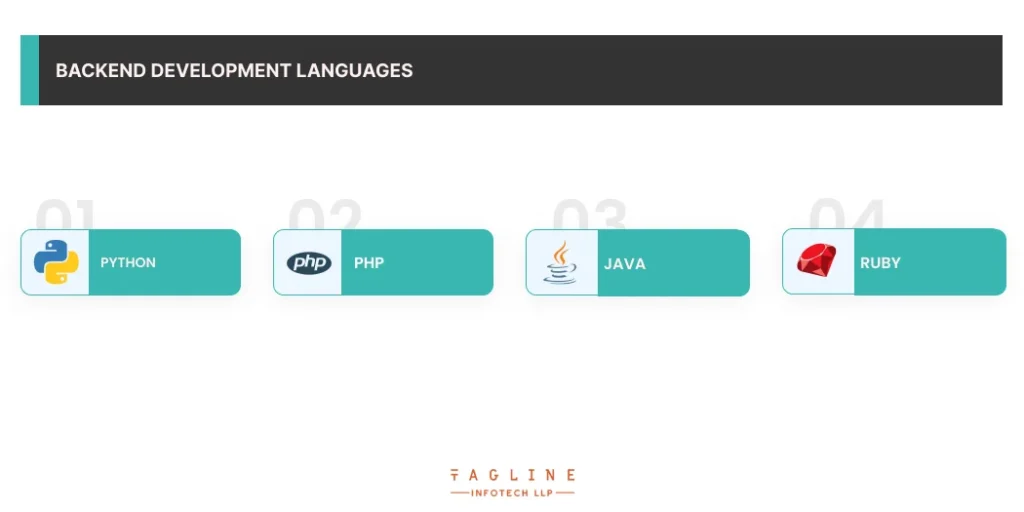
Explore some of the most well-known Backend development languages that are used to customize websites and web applications.
Do you want to create web application for your users to hastily find them their solution and to scale your business?
Choose Tagline Infotech to hire Back-end developers. Our developers have years-long experience with industry-wide domains of small & big dimensions.
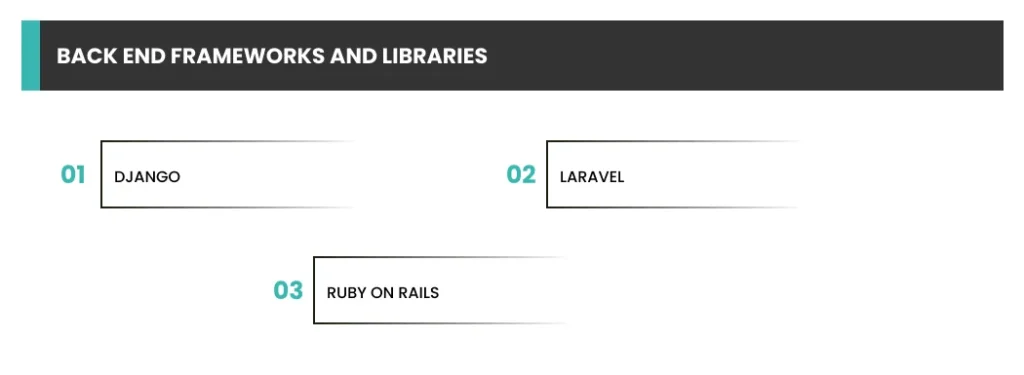
See the list of some of the most commonly used back end frameworks and libraries that are given below to get fully functional solutions.
Outsource a team of back end developers from Tagline Infotech that are proficient in Python, Ruby, Java, and other backend technologies. The overall cost of hiring back end developers depends upon the complexity of the project and requirements of the client. Partner with us to get a skilled team of programmers that provides different types of flexible hiring options and dependable backend solutions.
Want to see a detailed difference between front-end and back-end development? Then you are at the right place. Here you can see a clear comparison of frontend vs backend, highlighting what is the difference between front-end and back-end development, so that you can decide which one is the best option for you.
| Basis | Frontend Development | Backend Development |
|---|---|---|
| Definition | Frontend development mainly focuses on the client-side of the solution and creating different types of user interfaces. | Backend development of any website and application depends upon the server-side, handling data and logic. |
| Technologies | It mainly includes technologies like HTML, CSS, JavaScript, and many more. | It includes some of the most popular technologies like Python, Ruby, Java, PHP, Node.JS, and many more. |
| Responsibilities | It helps to design and implement different types of user interfaces. | It is used to manage different types of databases, servers, APIs, etc. |
| Data Management | It deals with data presentation and its rendering. | It handles and manages data storage, retrieval, and processing. |
| Communication | Frontend is used to communicate with the backend for data and functionality. | While Backend is used to Communicate with frontend for data presentation. |
| Security | It ensures client-side security and input validation. | It implements server-side security measures. |
| Examples | Examples of Front end development are Webpage layouts, animations, and interactive features. | Examples of Back End development are Database management, API creation, and server logic. |
| Average Salary | The average salary of front end developers is around 490000 INR per annum. | The average salary of back end developers is around 670000 INR per annum. |
Fullstack development can be simply described as the ability to handle both frontend and backend aspects of web development. Fullstack developers have the proficiency to design user interfaces and implement them with HTML, CSS, and JavaScript. Plus they also manage servers, databases, and APIs using languages like Python, Java, PHP, or Node.js. Business owners prefer to choose fullstack development so that they can get end-to-end solutions that fill the gap between frontend and backend.
Still confused in the comparison of front end vs back end? Then don’t worry here all doubts about backend vs frontend will be cleared. Frontend Development involves building user interfaces and focusing on user experience, while Backend Development focuses on server-side logic and data management.
If you like to create visually engaging interfaces and are passionate about user interaction, then frontend development vs backend development will help you decide that Frontend Development can be an ideal choice for you. On the other hand, if you like to handle complex server operations and data processing, then Backend Development can be a perfect choice for you.
Web and app development both are constantly evolving industries and I hope this blog about the comparison of frontend vs backend development helps to choose the best option. You should get in touch with a web development company that provides frontend and backend development services so that you can get a fully-featured technology-driven solution for the future.
The answer is backend developers get more salary than frontend developers because they need to handle complex fundamentals to integrate databases into the project and many more.
Frontend and backend both are popular terms for web development but currently, in the world backend developers are in more demand than frontend developers.

Digital Valley, 423, Apple Square, beside Lajamni Chowk, Mota Varachha, Surat, Gujarat 394101
D-401, titanium city center, 100 feet anand nagar road, Ahmedabad-380015
+91 9913 808 2851133 Sampley Ln Leander, Texas, 78641
52 Godalming Avenue, wallington, London - SM6 8NW